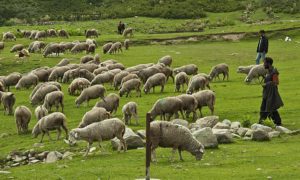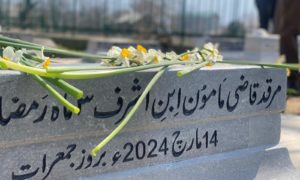Every year people across Kashmir visit the shrine of Hazrat Zan-u-din Wali, one of the principal disciples of Sheikh Noor-U-din Noorani, in south Kashmir’s Ashmuqam area. The devotees celebrate the occasion by burning ‘Mashals’ on the hillocks. But beyond the festive torch celebrations lies the riveting legend of the place and the event.
Some 20 kilometres short of famous hill resort of Pahalgam in southern Kashmir, the shrine of Hazrat Zan-u-din Wali lit up this past Friday night, on April 19. The age-old tradition of burning Mashals—called Zool in Kashmiri—was followed by religious processions.
People in large numbers, irrespective of religion, caste and creed, gathered inside the vicinity of the shrine to pay homage to the saint.

On Friday, young and old were all seen thronging the road to the shrine, branching near the Islamabad-Pahalgam highway. A few hundred meters walk or drive takes one to the foot of the stone staircase leading to the shrine. The mystic’s mausoleum is located inside a deep cave atop the hill, 100 meters above the main road.
There’s a very interesting story behind the custom of burning Mashals every year on this day.
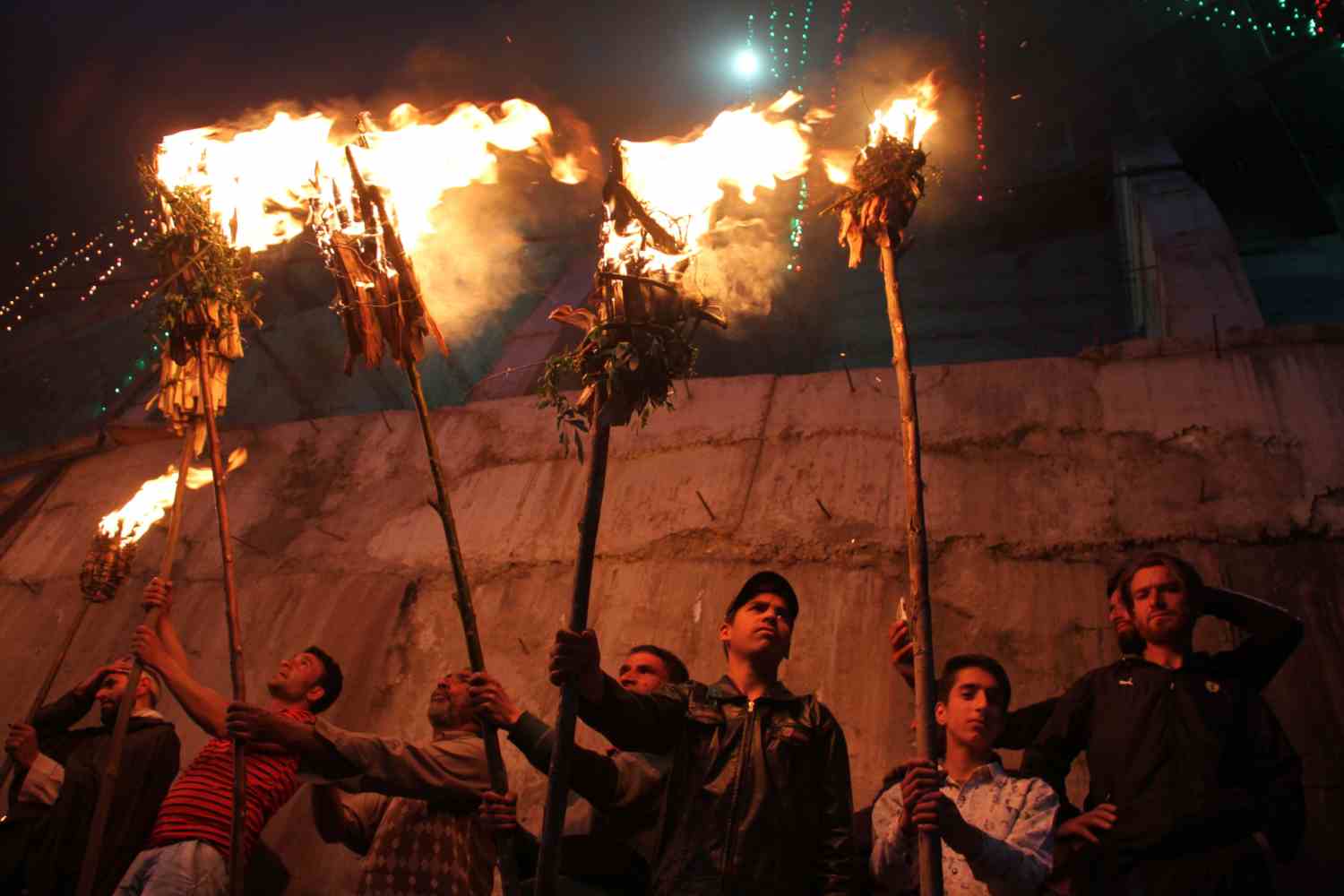
Many centuries back, as local legend has it, a demon had terrified Aishmuqam village during the rule of Ashushah Badshah. “Hardly a day passed when any of the villagers were not his prey.”
Then one day, the villagers approached the demon and requested him to eat them, one by one, by their turn, as per the popular belief. “Demon agreed, but in turn, the villagers were supposed to provide him Rotis (bread) each day.”
This process continued for months.
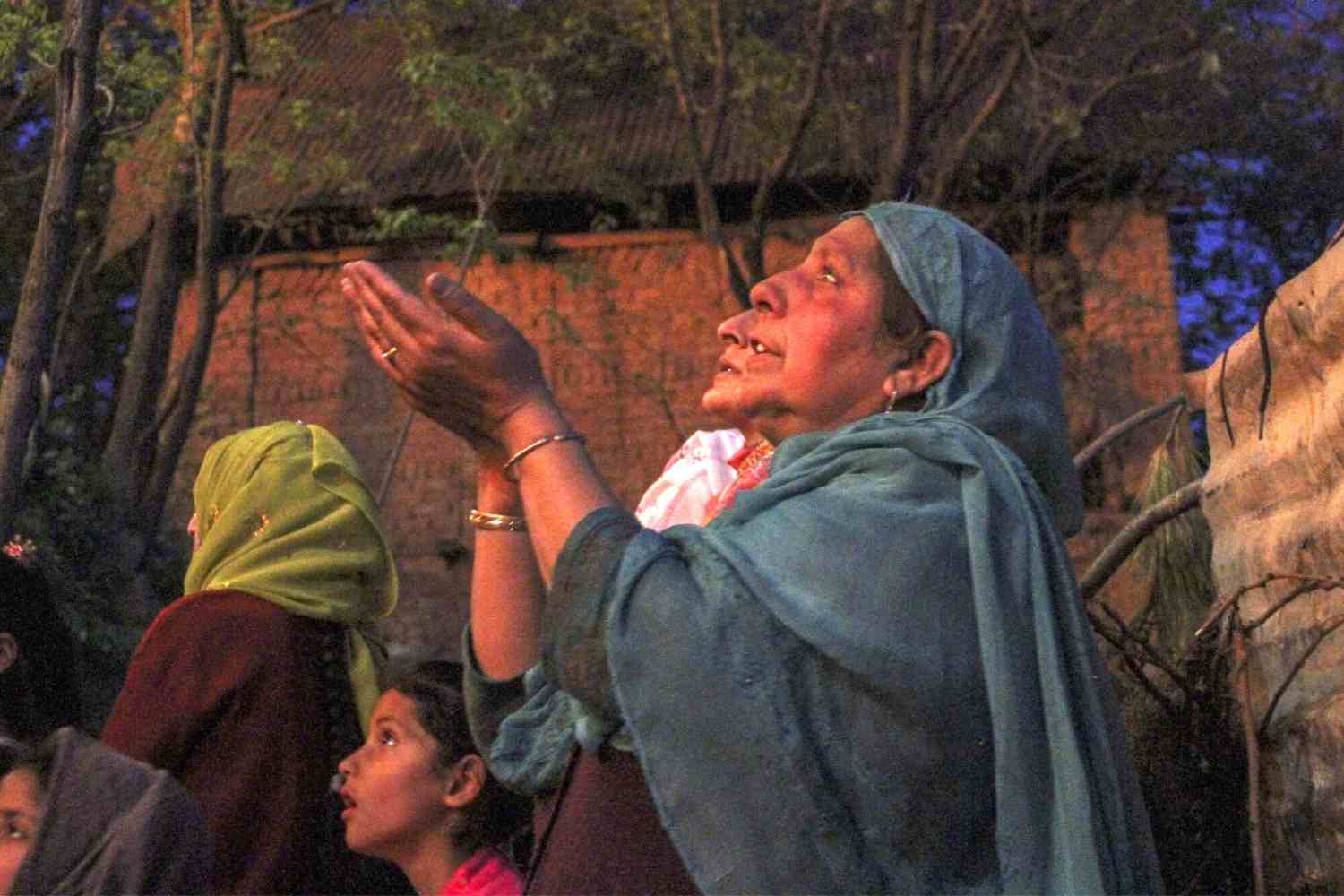
But when it was the turn of a young orphan, a Gujjar boy named Bumisad, the things took a U-turn. The boy’s turn had come the day he was supposed to get married.
“As Bumisad approached the demon, he began to share his food. And when the demon asked him, not to eat his share, he replied, in a lighter vein, ‘the food I eat will anyway reach you.’ Then the boy challenged the demon for a fight,” the locals, while narrating the legend, say.
The fight continued for a week, before one night, the villagers learnt that Bumisad has killed the demon.
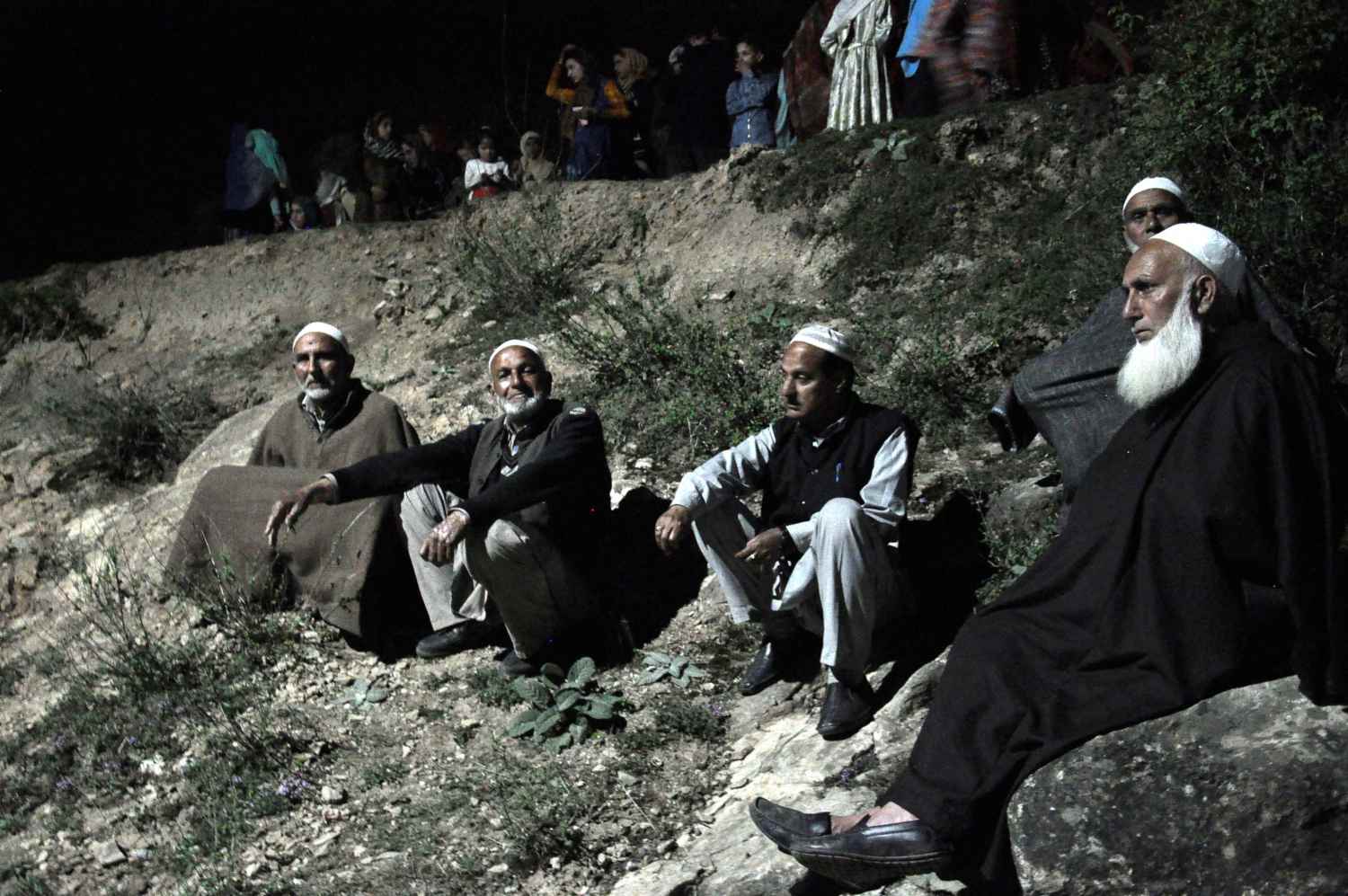
“They could not believe their eyes as they went out of their homes carrying Mashals in their hands to find out the truth,” the locals say. “On finding the dead body of a demon and Bumisad still alive, their joy knew no bounds as they began to rejoice.”
From that day, every year, the day is celebrated by burning the Mashals. “The demon turned into a snake and was then called Shahmar (head of the snakes).”

Then after a few centuries, the legend goes, Sheikh Zain-u-din Wali (RA), who before his conversion was known as Zia Singh, a prince belonging to the ruling Rajas of Kishtwar along with his mother, who later became Zoon Ded, met Sheikh Noor-u-din Noorani (RA) in Bumzu village, some 16 kilometres south of Aishmuqam.
There, both of them embraced Islam. And thereafter, Zain-u-din mediated for a long time in a village Mandjan of Tehsil Sopore where he attained spiritual perfection.
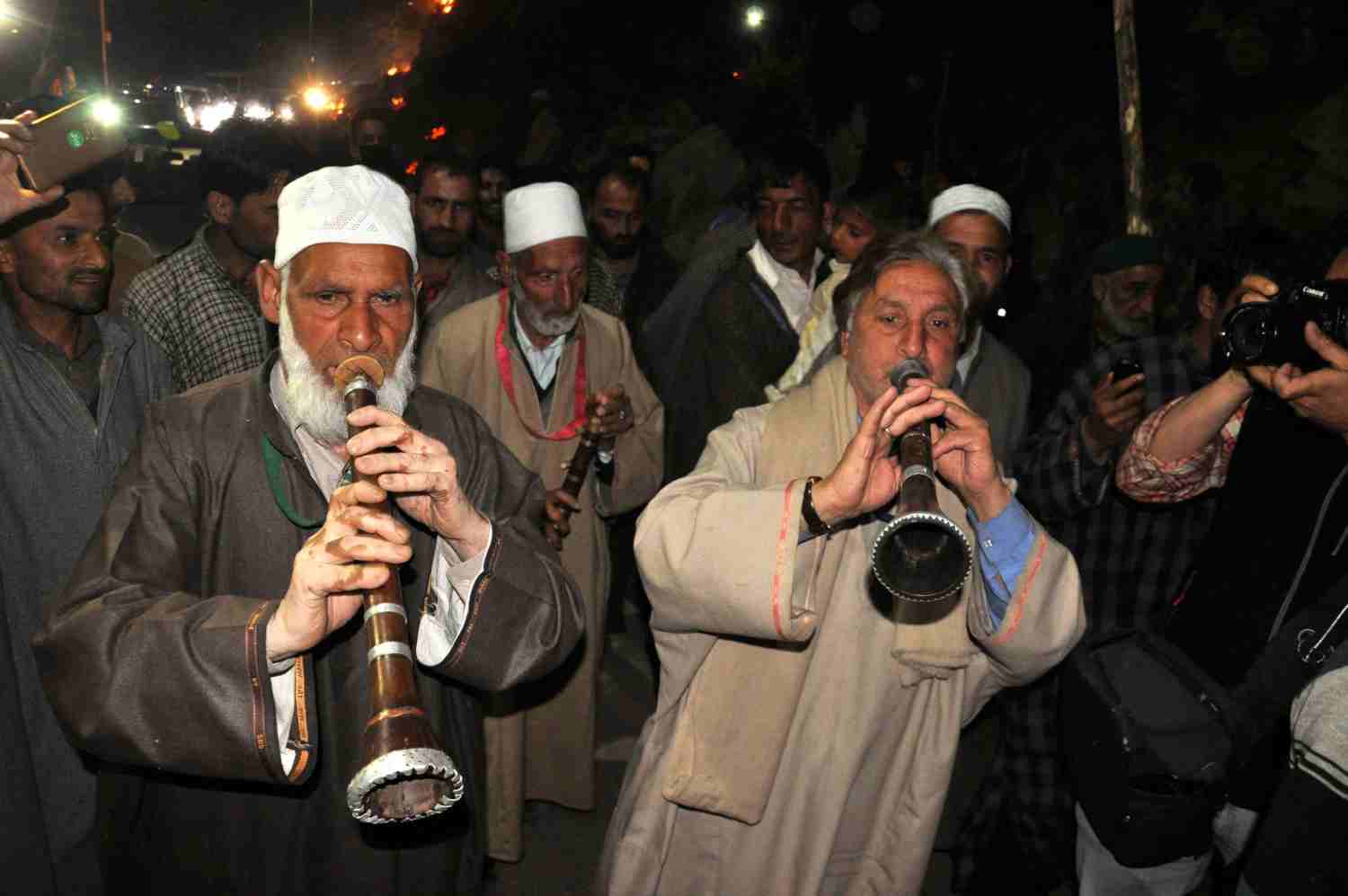
It was at this stage that Sheikh Nur-ud-din advised him to migrate to the cave at Aishmuqam and to meditate there for the remaining period of his life.
“On his arrival, Sheikh Zain-u-din found the entrance to the cave blocked by snakes, cobras and reptiles,” the locals say. “It’s said that the saint carried with him a cub which he had received from his master. Seeing the serpents, he placed the cub on the ground and it was instantaneously transformed into a dreadful cobra. The snakes in the cave were awestricken and not only surrendered to the Sheikh but also vacated it and migrated to the village Phuurpujan which is about 16 miles away from Aishmuqam.”
The mystic finally breathed his last there.
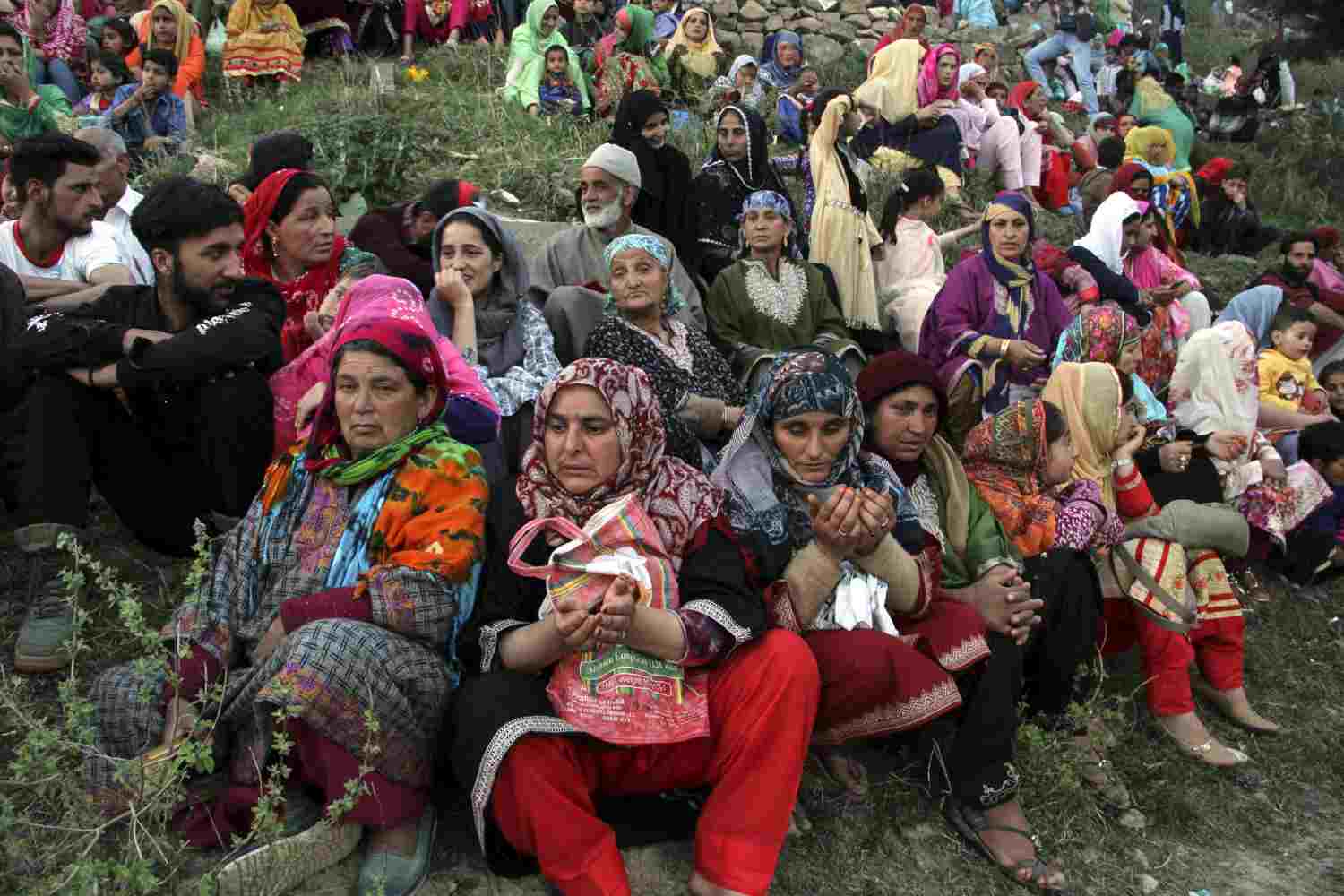
But the exact date of his death is not known. His Urs (anniversary) is, however, being celebrated on the 13th day of Basakh, corresponding to April month.
Two mosques known as Khankahs are also attached to the shrine. The Khankah besides being used for prayers is also a repository of the relics of the saint. These consist of a bow, wooden bread, a rosary, a wooden club and a copy of Quran.
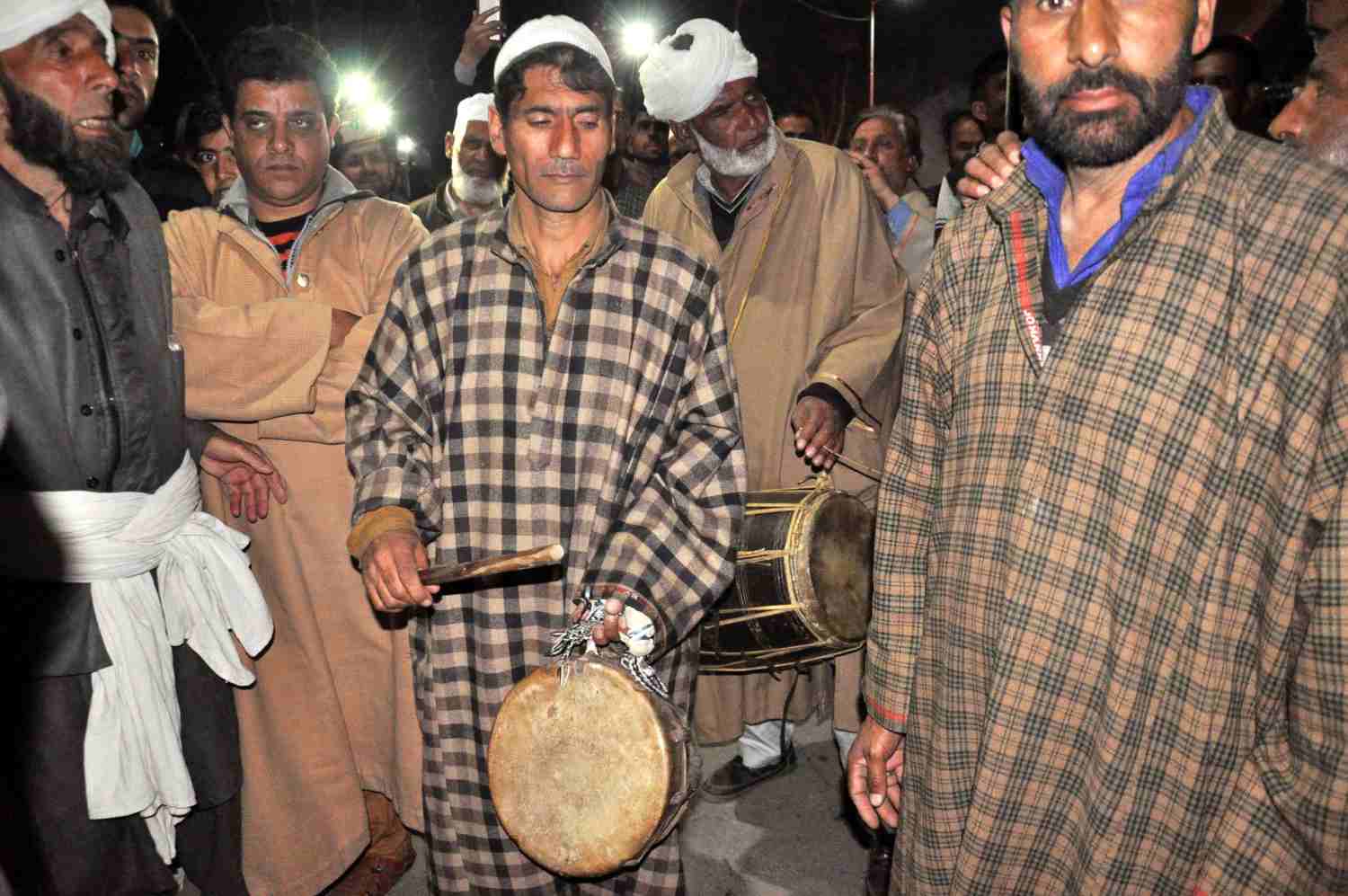
These relics are publicly displayed whenever the village face catastrophes, such as a famine, epidemic, etc.
It’s said that the saint observed fasts frequently and whenever he felt hungry, he licked the wooden bread to satisfy his appetite.
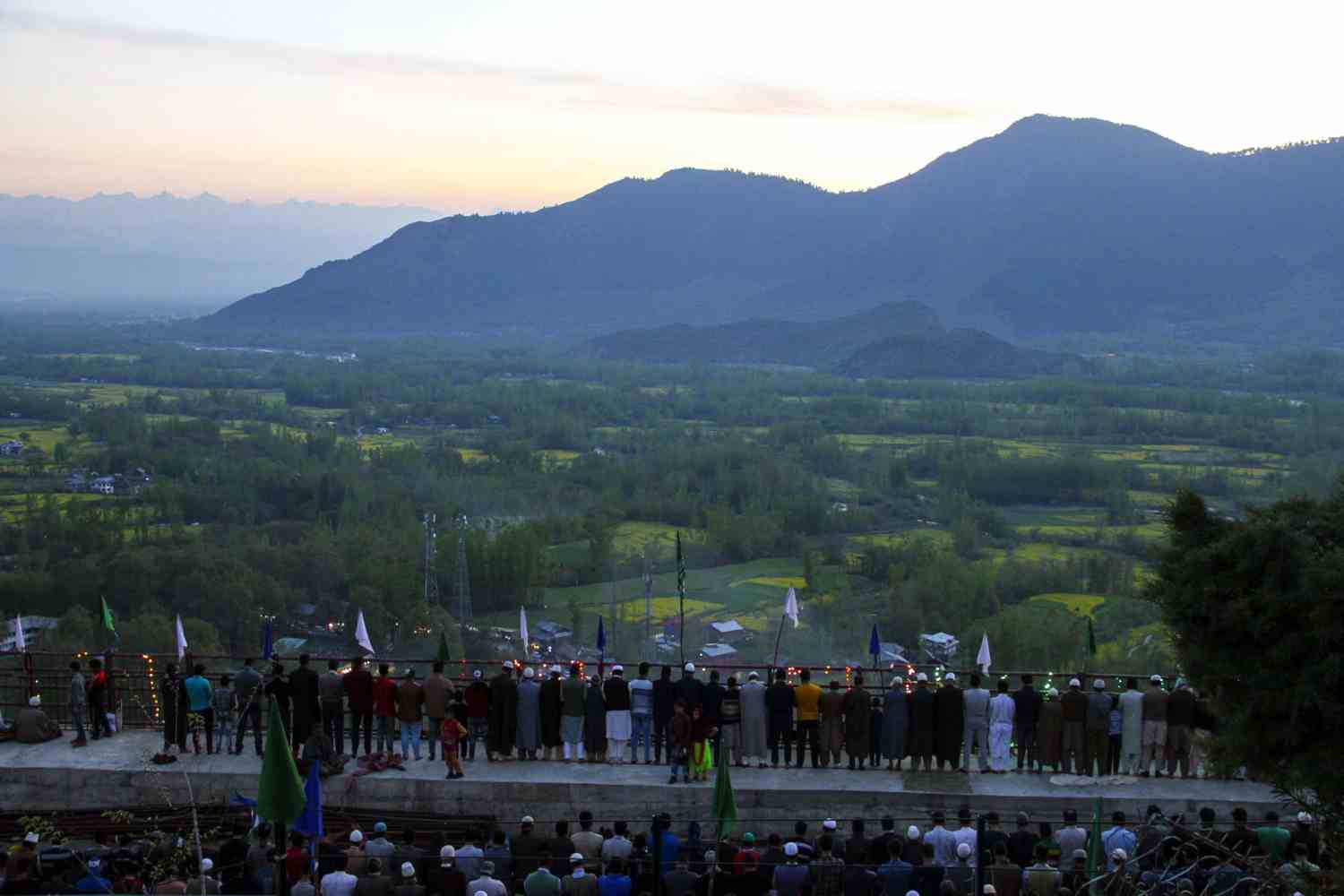
The shrine of Zain-u-din is respected by all communities. They actively participate in the Urs—attracting thousands of people from across the valley every year.
Besides Shab and Zool festival, congregational prayers are also held on the occasion, where worshippers pray for peace and harmony in the valley.
Like this story? Producing quality journalism costs. Make a Donation & help keep our work going.





